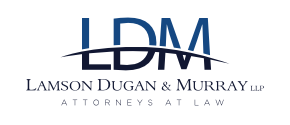After Super Storm Sandy flooded Amtrak’s tunnels under the East River, the passenger railroad sought to obtain coverage under a number of all risk policies in effect at the time. It wasn’t just the obvious water damage to Amtrak’s property. Amtrak also suffered from chloride (salt) erosion of its cement and steel after the waters were siphoned off. This corrosion would necessitate replacing track infrastructure at great cost – even equipment that was not directly affected by the flood. Did the primary and excess policies cover both types of damages?
The 2nd Circuit Court of Appeals finally gave Amtrak an answer a few weeks ago – some four years after Sandy made landfall. See National Railroad Passenger Corp. (AMTRAK) v. Aspen Specialty Ins. Co., et al, No. 15-2358-cv, ___ Fed. Appx. ___ (2nd Circuit, September 7, 2016).
The opinion was only a few pages. This alone was an amazing achievement considering that the scope of the decision covered over a dozen different insurers, their policies, and four separate areas of coverage on each contract. Increase the throttle setting on your brain, Dear Readers. We are powering up now. Let’s analyze together the Circuit’s holding to find out how it got there – without getting derailed by policy tedium and wording.
A number of the Amtrak policies had different definitions of what “flood” loss means. This was key, because Dear Readers as you know, the specific policy language controls coverage. Several definitions included “storm surge,” and several covered “waters on dry land.” In the end, the 2nd Circuit didn’t care. It summarily dismissed any distinction from one policy to the next by stating that the common and unambiguous understanding of what “flood” means in each policy is essentially the same: “the inundation of sea water from Sandy’s storm surge.” Done and done.
One would think Amtrak would be pleased by this ruling finding coverage under all the polices in one fell swoop. But the policies contained a sub-limit for flood damages, capping coverage at $125 million. If Amtrak could convince the 2nd Circuit that more than just a flood occurred, for instance wind driven water, then coverage would be broader and the limits much, much higher. Alas, the Court wasn’t buying it. The 2nd Circuit said that a storm surge is wind driven water onto dry land – making it a flood. The appellate court gave Amtrak coverage then, up to $125 million, but beyond that: rejection!!
Moving on, the 2nd Circuit reviewed the trial court’s holdings on each policy to determine whether coverage was broader than just the immediate water remediation. Did the policies cover the extensive track infrastructure damage and subsequent chloride erosion that occurred after the flood waters were removed? Also did the policies cover the additional expenses associated with repairing the track damage, such as costs for equipment that was not directly inundated by water? These types of damages are called an “ensuing loss.” Ensuing losses were not subject to the sub-limit of $125 million. Amtrak wanted coverage for those losses up to $675 million. A noted difference worth fighting for.
The 2nd Circuit said that “courts should not allow coverage for an ensuing loss directly related to the original risk excluded.” Id., slip op. at 3. The Court then rejected Amtrak’s claim that its track damages from chloride residue should be considered a separate covered peril under the ensuing loss clause in the policies. “The corrosion of Amtrak’s metal equipment cannot meaningfully be separated from water damage that is plainly subject to the flood sub-limit, nor can it be attributed to a distinct ‘covered peril.’” Id. Those losses were covered, but capped by the flood sub-limit at $125 million. Amtrak: down two. Or up to $125 million, but not $765 million.
Tomorrow, more discussion of the other policy clauses. Stay tuned……….
Take Away Rule
Clever policy interpretation may get you everywhere on coverage! But not in the 2nd Circuit. “Flood” is unambiguous. It means storm water surge – even if driven by wind. Corrosion from flood waters is not an ensuing peril. Thus, no coverage beyond the smaller flood sub-limit.
But wait!! There’s More!! Stay tuned to the next blog to find out whether Amtrak could avail itself of the $675 million coverage limits in some other way…..




Leave A Comment